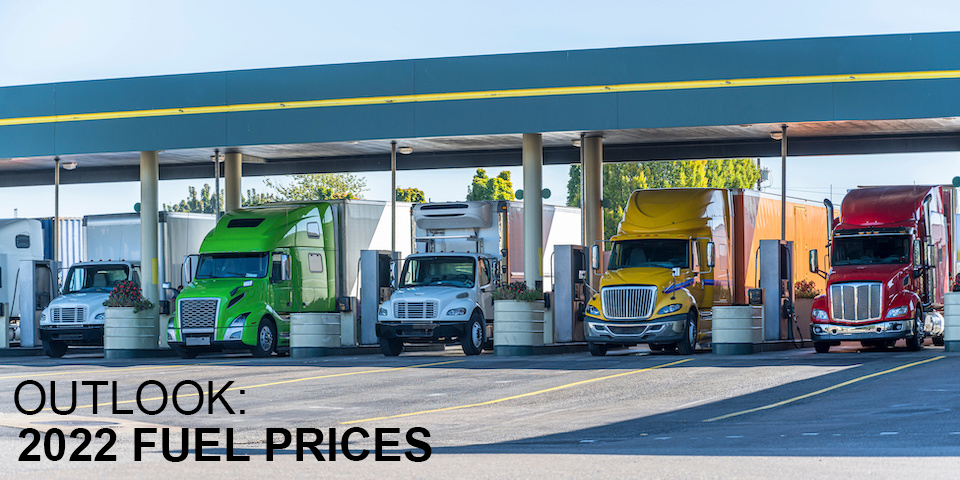Outlook: 2022 Fuel Prices - News

Outlook: 2022 Fuel Prices
Mar 16th 2022 8:00AM
As of press time, the national average price of gasoline is $4.01 a gallon, up 45% from $2.76 a year ago, according to the AAA, when pandemic lockdowns were in the process of being lifted and vaccines became readily available, once again opening up the United States to regular fuel consumption.
Diesel is $4.53, up 51% from $2.99 this time last year.
Gas prices are believed to continue in an upward trend, thanks in-part to Russia’s invasion of Ukraine, according to kbb.com. California, the most expensive market to date, is already at $5.29 per gallon.
With fuel being one of your biggest expenses as a logistics professional, higher prices at the pump mean lower profit in your pocket.
So, what’s driving the recent surge in fuel prices? Here are three factors to watch.
1. Post-Pandemic Recovery.
The sticker shock at the pump might have more to do with comparisons to most of 2020’s historically low fuel prices than what would have been typical if we hadn’t been in the middle of a pandemic with global economic lockdowns that lasted for several weeks. But 2021 saw prices tick north once again as folks started returning to the normality of an everyday commute.
Until as recently as last spring, most employees who could work remotely did not commute to the office, continuing to dampen fuel demand at that time.
But states have since lifted most COVID restrictions from 2020 and 2021, meaning increased travel, more people commuting to the office, and greater fuel demand continuing to drive up the price at the pump.
2. Severe Weather.
With the increased propensity for severe storms to pop up across the U.S., including tornadoes ravaging the mid-west as well as the approaching hurricane season, beginning in June, watch for potential impacts to U.S. refineries in the Gulf that could sustain the rising fuel price trend through the entirety of the summer.
Folks need fuel to heat and power their homes during times of heightened weather emergencies, and increased fuel demand plus reduced supply will usually result in higher prices.
3. Global Events.
Having already touched on the war between Russia and Ukraine, Kelley Blue Book’s Sean Tucker points out that the Unites States has yet to sanction Russia’s oil production. This is mainly because there is concern that doing so could drive up prices to the benefit of Russian President, Vladimir Putin.
A move such as that could backfire, creating volatility in the oil market. Something that could give the global market reason to respond poorly, keeping costs high or driving them even higher.
Bottom Line
At least for the foreseeable future, as fuel demand continues to increase, so will the price at the pump. A critical factor that could help stabilize prices will be an increase in fuel supply, which remains to be seen if that is even going to be possible.
Watch this space for new developments.


